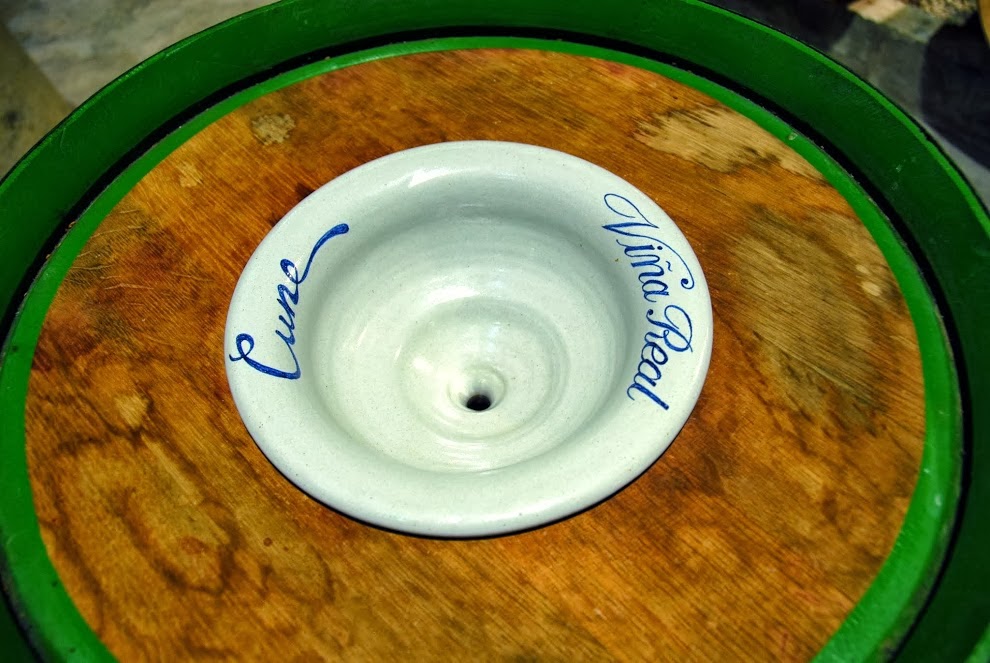 |
| Rioja, Spain |
1. Map it out. Study a map and plan your days around certain regions, wineries or landmarks so you don't end up driving back and forth and wasting precious tasting time in the car.
2. Make appointments. Some places require them, either because they are small operations that only open their doors by request or because they have tours at specific times. Tours book up fast, especially English tours in non-English speaking areas. Hotels and local guides can help make your arrangements. If the website says appointments aren't needed, it's a nice idea to email the winery anyway so you can find out about the different options for your visit or just give them a head's up that you are coming, especially if your party is greater than 2 people.
3. Don't forget about lunch. Depending on where you are visiting, lunch can be an event in itself at a winery, complete with a wine pairing and maybe a tour. I have had some amazing wine lunch experiences abroad, but when I wine tour domestically I never seem to get the lunch thing right. I am notorious for planning a full day of wine and forgetting about lunch. So if a wine lunch isn't part of your plan, at the very least block an hour and find a place to get some sandwiches. Tasting wine all day and not eating is a recipe for disaster.
4. Designate a driver. This is important - tasting 2 ounces of wine here and there may not seem like "drinking" but those sips add up. Abroad, "tastes" may be even larger since their beverage serving laws are different. You can hire a driver or join a tour, but if you choose to drive around on your own, draw straws within your group. Lucky for me, my husband always prefers to drive so he becomes the designated driver. How does he do it? See #5.
5. Use the spitoon. It is perfectly acceptable to sip some wine, swish it around your mouth like mouthwash and spit it into those cute containers on the bar. If you don't see one, ask for one. Designated driver or not, it is no fun to be drunk by 11am.
6. Drink water. Have a glass at each winery you visit. Get bottles for the car at that lunch stop. Wine tasting dehydration makes for a very painful evening.
7. Document your experience, whether through pictures, purchases, or notes. Then you can remember what you enjoyed before it all becomes a blur.
8. Take advantage of your visit. Often wineries will have more wines to taste at the winery than what may be available in stores, and this is the place to learn and stock up on these winery-only wines. Prices are often better at the winery since there is no middleman to pay in distribution. The wineries like selling direct because they form a relationship with the consumer and get a better margin on the sale. Finally, many wineries offer discounts on multiple bottles on top of that better pricing, so it's a good place to load up on your favorites.
At the same time, don't feel compelled to buy wine you don't like just because you are there and the server was nice.
9. On wine clubs. I've talked about wine clubs before. Most wineries have some version of a wine club because they like selling direct. First, know what you're getting into upfront and how much wine you are committing to in the contract period (usually 1 year). Having extra wine around may not be the worst problem in the world for some, but it can add up in cost and space. Second, if you think you want to join a winery's club, try the wines on at least two separate occasions before joining the club. Sometimes the experience of tasting wine at a winery that first time may be influenced by other factors - environment, circumstance, how much wine you've already had, the romance of it all - so it helps to have another experience to draw upon.
10. Enjoy! And please share your experiences and any tips you pick up along the way in the comment section below.










